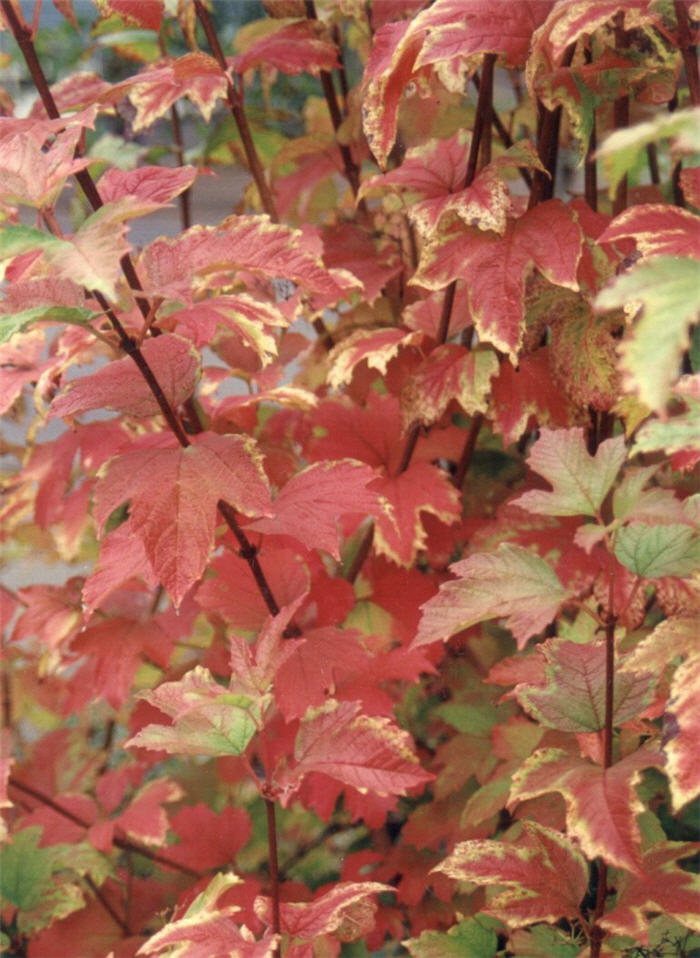| Botanical Name: Viburnum trilobum | |
| Common Name: American Cranberrybush Viburnum |

-
Anatomy
-
Culture
-
Design
Plant Type
Shrub
Height Range
6-12'
Flower Color
White
Flower Season
Spring
Leaf Color
Green
Bark Color
Brown, Grey
Fruit Color
Red
Fruit Season
Fall, Persistent
Sun
Full, Half
Water
Medium, High
Growth Rate
Moderate
Soil Type
Clay, Loam
Soil Condition
Average, Rich, Well-drained
Soil pH
Acid, Neutral, Basic
Adverse Factors
n/a
Design Styles
English Cottage, Formal, Woodland
Accenting Features
Fall Color, Showy Flowers
Seasonal Interest
Spring, Summer, Fall
Location Uses
Background, Shrub Border, Foundation, Walls / Fences
Special Uses
Hedge, Screen, Mass Planting
Attracts Wildlife
Birds, Butterflies
Information by: Stephanie Duer
Photographer:
Photographer:
-
Description
-
Notes
American cranberrybush is a deciduous viburnum with a dense, rounded crown, growing about 8 to 12 feet tall with equal spread. The foliage is lobed like a maple leaf, and the dark green color turns red to purple in the fall. White, flat-topped flowers appear May or June, depending on the cultivar, and ripen to a brilliant red in September and October. Butterflies and birds are attracted to the shrub. Useful in shrub and foundation borders, or in a hedge or screen. Many cultivars are available.
Grow in well drained soil in full sun to partial shade. Adaptive to a variety of soil types and pH. Shearing is to be discouraged; prune selectively as necessary to control size, though ideally it is left alone. Avoid shearing; prune selectively (see Guides).